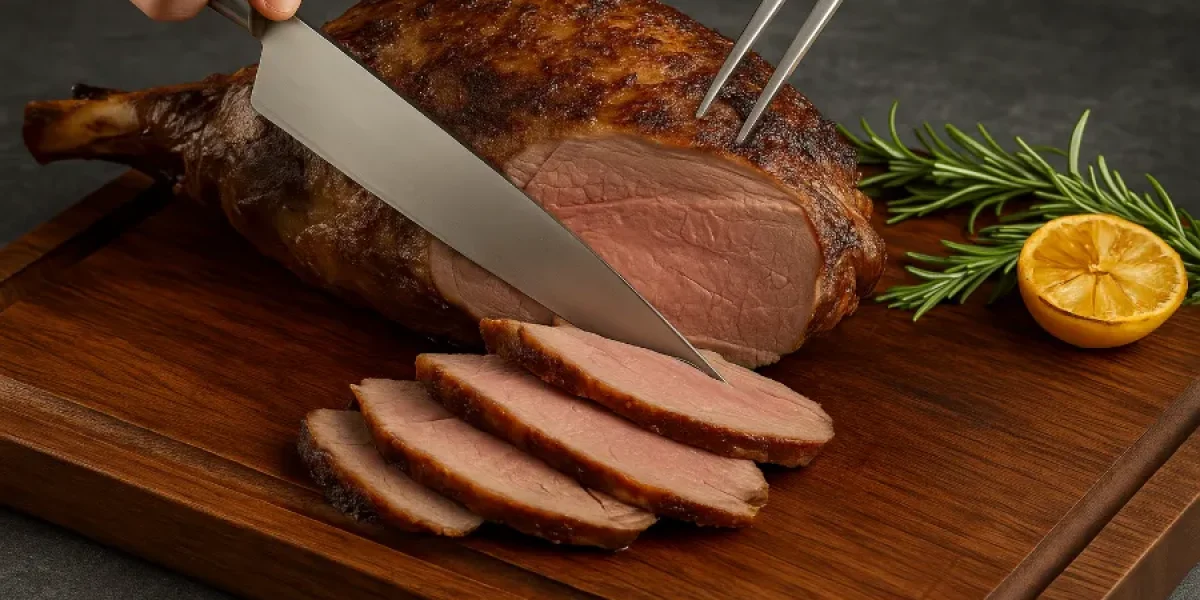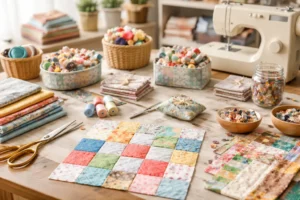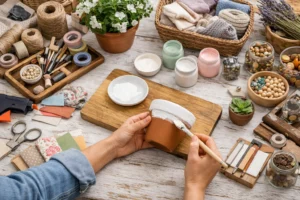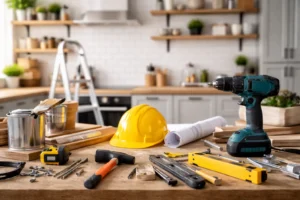There’s something deeply satisfying about learning how to carve lamb the right way. That moment when your roasted leg comes out of the oven — golden, tender, glistening with juices — feels like the payoff of every slow, patient hour you spent tending it.
But let’s be honest: carving can feel intimidating. Where do you start? Which knife works best? How do you make those beautiful, even slices without tearing your masterpiece apart?
Whether you’re a first-time home cook or someone aiming to match restaurant precision, this guide walks you through how to carve a roasted leg of lamb step by step — including tools, techniques, and the difference between classic, modern, and even high-tech carving approaches.
Know Your Roast Before You Carve: Understanding the Leg of Lamb
Every great carving begins with understanding your leg of lamb. It’s not one uniform muscle — it’s a collection of different sections surrounding a central bone that runs diagonally through the joint. Each section has its own grain direction, so one straight slice won’t do it justice.
Once you trace that bone and learn how the grain changes, the meat practically guides your knife. Suddenly, carving feels less like guesswork and more like reading a map your roast has drawn for you.
The Right Blade for the Job: Choosing the Perfect Carving Knife
A sharp, elegant carving knife is your most important companion. Look for one that’s long, narrow, and slightly flexible — ideally between 9 and 12 inches. This lets you make long, sweeping cuts instead of short, choppy ones.
A good handle feels balanced and steady in your hand. When you hold it, the blade should feel like an extension of your arm, not a tool you’re fighting with.
💡 Pro tip: Hone the blade before every use. A dull knife shreds fibers instead of slicing cleanly — and it makes carving a frustrating workout instead of a satisfying ritual.
The Carving Knife Set That Makes All the Difference
Even if you only cook a roast a few times a year, a reliable carving knife set transforms the experience. You don’t need a professional chef’s kit — just the essentials that make carving cleaner and calmer.
A great set includes:
- Carving knife: Long, narrow, and razor-sharp.
- Carving fork: Two long prongs to hold the meat steady without piercing too deeply.
- Honing rod: To keep your edge precise and responsive.
- Cutting board with juice groove: Keeps your counter neat and saves those delicious drippings.
When everything is in place — sharp, clean, balanced — carving becomes a rhythm, not a chore.
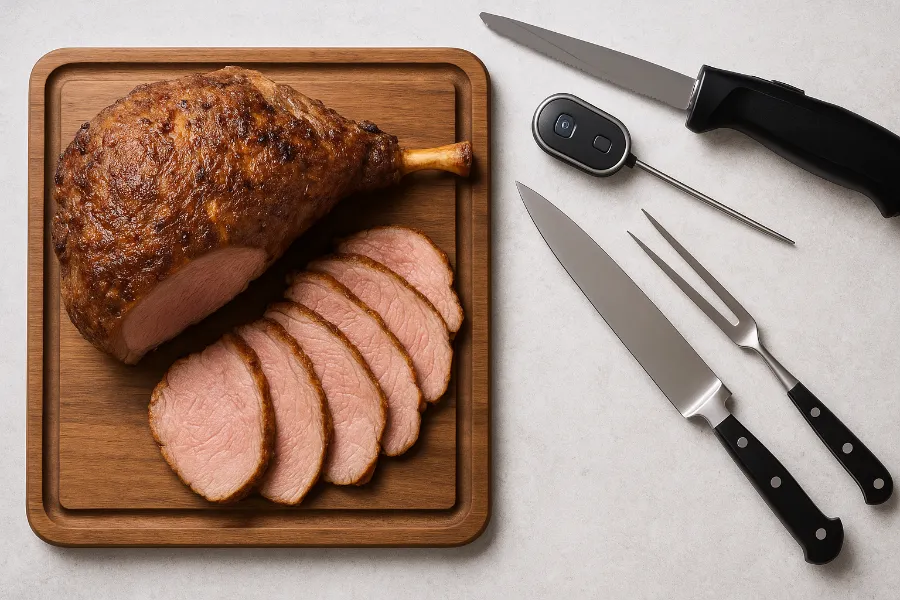
How to Carve Meat Properly
If you’ve ever watched a chef carve meat properly, it looks effortless. But that confidence comes from a few simple rules.
- Rest first. Always let the roast sit for 20–30 minutes. This locks in moisture and tenderness.
- Cut across the grain. This shortens muscle fibers, giving you that melt-in-the-mouth texture.
- Slice with long motions. Avoid the sawing motion — one clean sweep is your goal.
- Keep it steady. Use the fork for light control, not deep stabs.
- Stay calm and deliberate. Each cut builds your confidence.
When you carve patiently and purposefully, even a simple home-cooked roast feels like an occasion.
How to Carve a Bone-In Leg of Lamb
A bone-in leg of lamb is the ultimate showpiece — the kind of roast that earns a few gasps when you set it down. The flavor is unbeatable, but carving around the bone can feel tricky until you know the rhythm.
Step-by-Step Approach
- Let it rest under loose foil for 25–30 minutes.
- Feel where the bone runs — it’s diagonal through the center.
- Slice parallel to the bone to free the outer layers of meat.
- Once free, cut those pieces across the grain into serving slices.
- Scoop out the smaller, tender morsels near the joint (chef’s reward).
The Pros and Cons
Advantages: Deep, rich flavor from the marrow and bone. Impressive presentation. Juicier texture.
Disadvantages: Uneven cooking near the bone if roasted too quickly. Slightly more challenging for beginners.
Still, once you’ve done it a few times, carving bone-in becomes second nature — and honestly, it’s the most satisfying roast you’ll ever serve.
How to Carve a Boneless Leg of Lamb
If you prefer a neater, simpler carving experience, go with a boneless leg of lamb. The absence of the bone makes slicing straightforward and predictable — perfect for first-time carvers or quick weeknight dinners.
Step-by-Step Approach
- Rest it for 20 minutes before cutting.
- Unroll if it’s tied, flatten it out, and find the direction of the grain.
- Slice across the grain in smooth, even strokes — about ¼ inch thick.
- Fan the slices on a platter for a clean, elegant look.
The Pros and Cons
Advantages: Easy, fast, and consistent. Great for sandwiches and meal prep.
Disadvantages: Loses some of that “roast drama” and deep bone flavor.
It’s the ideal option for busy cooks who still want beautiful presentation without the learning curve.
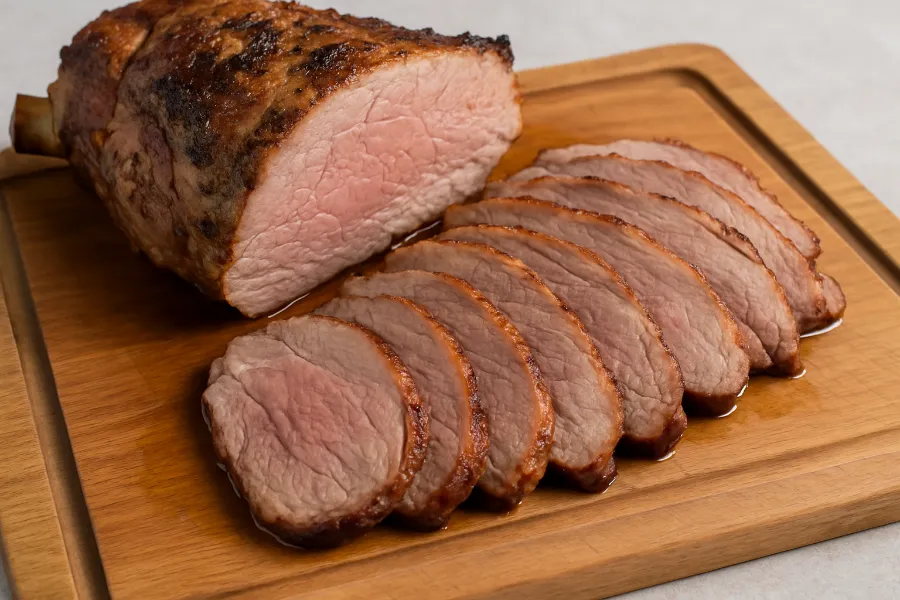
Carve Leg of Lamb Like You Mean It
Whether it’s bone-in or boneless, the way you carve a leg of lamb defines the experience. Once you find your rhythm — steady hand, confident strokes — carving stops being intimidating and starts feeling intuitive.
Take your time. Listen to the knife glide through the grain. That’s the sound of confidence. That’s the sound of dinner done right.
Roast Lamb Deserves a Proper Finish
Your roast lamb has been the star of the oven — now it deserves the spotlight on the table.
When you carve it correctly, each slice glistens, tender and aromatic. Arrange the meat slightly fanned on a warm platter, drizzle lightly with pan juices, and scatter a few herbs or roasted lemon halves for color.
It’s a feast for the senses — rustic, generous, and inviting. The kind of dish that makes everyone linger at the table just a little longer.
Classic, Modern, and High-Tech Ways to Carve Lamb
Carving has evolved with our kitchens — and there’s no one “right” way anymore.
The Classic Way
Think old-school dining rooms and Sunday roasts carved at the table. The knife glides through the lamb as family and friends look on.
Pros: It’s elegant and theatrical.
Cons: Takes steady hands and a little courage.
The Modern Way
Most of us carve in the kitchen — bright light, sturdy board, no pressure.
Pros: Easier, cleaner, and more forgiving.
Cons: You lose the presentation moment.
The High-Tech Way
Welcome to carving 2.0 — electric carving knives, smart thermometers, and non-slip carving boards that hold the roast steady.
Pros: Precision without stress.
Cons: You’ll never quite look as cool as your grandmother did with her carving fork.
Whichever path you choose, it’s the care that counts.
Amateur vs. Pro: Same Roast, Different Mindset
Here’s what separates a home cook from a professional — and how you can bridge the gap:
| Home Cook | Professional Chef | |
|---|---|---|
| Mindset | “Please don’t ruin this.” | “Let’s make it perfect.” |
| Knife Motion | Hesitant, short strokes | Long, steady glides |
| Setup | Whatever’s clean | Organized carving station |
| Goal | Feed and enjoy | Impress and perform |
But both share the same heart: cooking with care. And truthfully, a lovingly carved roast at home beats a perfectly sliced one in any restaurant.
Avoid These Common Carving Mistakes
Let’s make sure your next carving goes smoothly:
- Cutting too soon: Always rest your roast.
- Using a dull knife: Re-hone before each session.
- Slicing with the grain: Rotate the roast; cut across.
- Working on a tiny board: Give yourself room to maneuver.
- Rushing: Carving rewards patience, not speed.
The more mindful you are, the better your results.
Finishing Touches That Elevate the Experience
Once the carving’s done, add a few small gestures to make your lamb unforgettable:
- Warm the platter so slices stay tender.
- Spoon a bit of pan jus for shine.
- Sprinkle flaky sea salt and chopped herbs.
- Add roasted garlic bulbs or lemon halves for contrast.
It’s these details that make your meal feel intentional — and memorable.
Why Mastering How to Carve Lamb Is a Kitchen Milestone
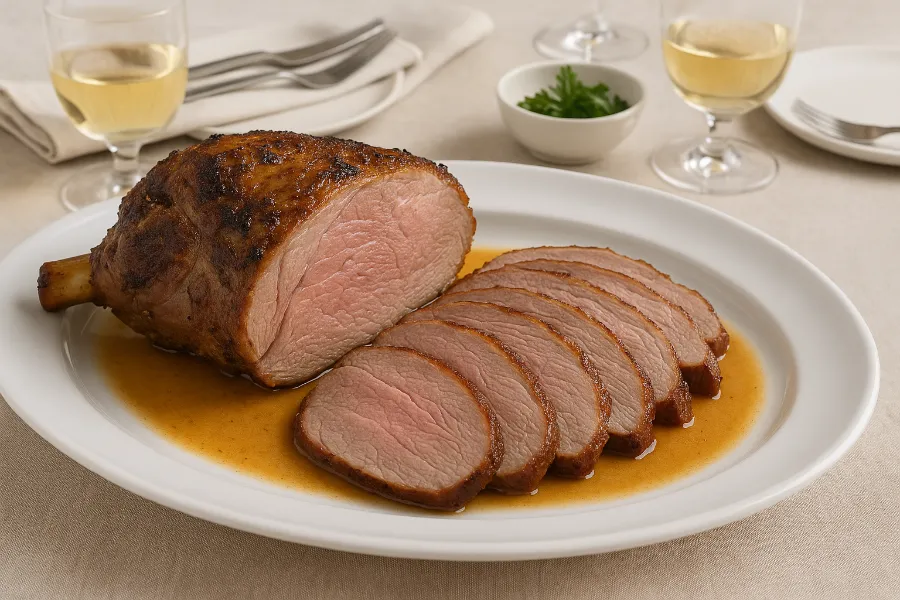
Learning how to carve lamb is more than a cooking skill — it’s a rite of passage. It’s confidence. It’s craftsmanship. It’s the quiet pride of presenting something beautiful that you made with your own hands.
Classic or modern, bone-in or boneless, amateur or seasoned cook — carving lamb is an act of respect for your food and your guests.
So the next time your roast rests on the board, take a deep breath, steady your knife, and enjoy the rhythm of it. Because once you learn to carve with care and confidence, every dinner feels like a celebration.
FAQs
The best way to carve lamb is to let it rest first, then slice across the grain using a sharp carving knife. This keeps the meat tender and juicy while giving you clean, even slices.
Always carve lamb against the grain. Cutting across the fibers shortens them, giving you soft, melt-in-your-mouth slices instead of chewy bites.
Use a long, narrow carving knife — about 9 to 12 inches — for smooth, confident strokes. Pair it with a carving fork for better control and safety.
Start by locating the bone and cutting parallel to it to loosen large sections of meat. Then slice those pieces across the grain for beautiful, tender servings.
Simply unroll the roast, identify the grain, and make long, even slices across it. Boneless legs are easy to carve and great for clean, uniform presentation.
Yes — always rest your roast lamb for 20–30 minutes before carving. It allows the juices to redistribute, keeping every slice moist and flavorful.
Bone-in lamb gives deeper flavor and classic presentation but requires more skill to carve. Boneless lamb is simpler, quicker, and easier for beginners to master.

